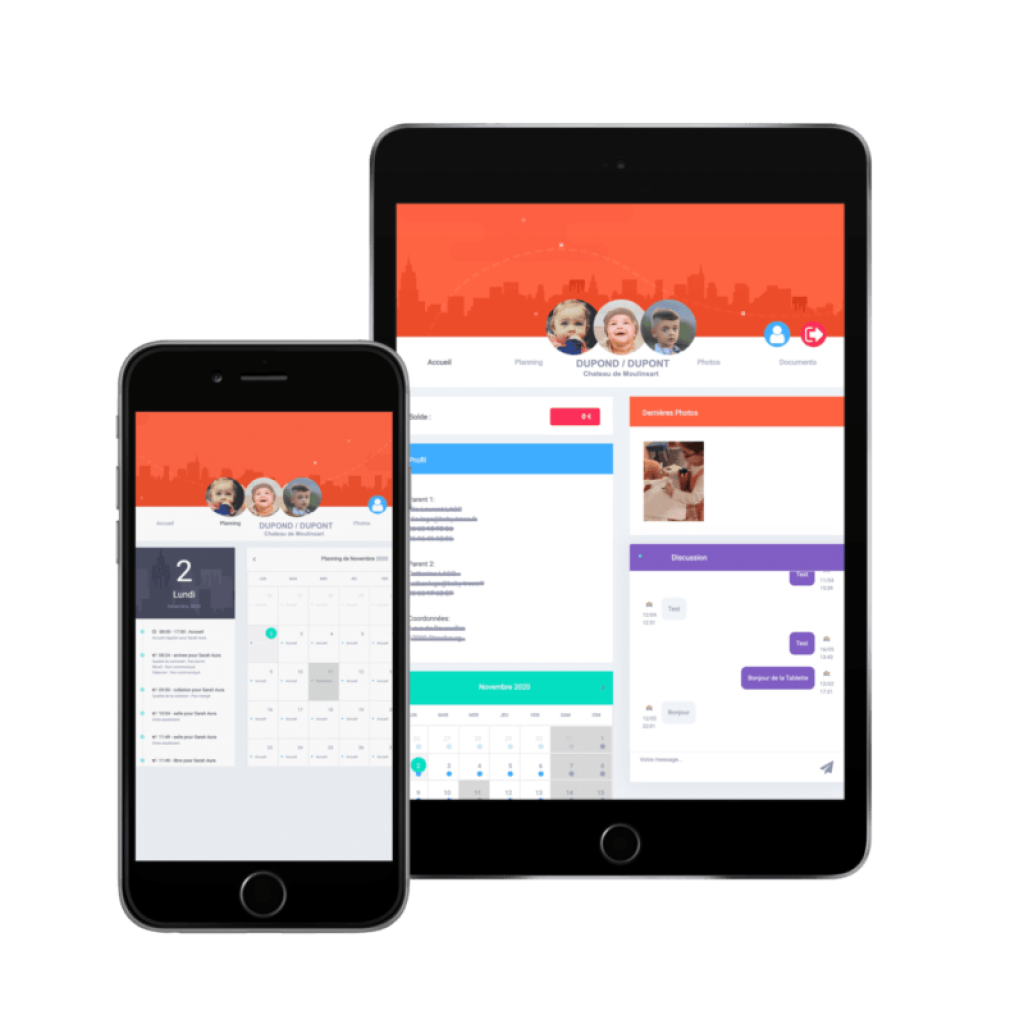BABYTREES® DAYCARE CENTRE IN WASSELONNE
Rue du Général de Gaulle
Our Wasselonne daycare is just a short walk from the town hall. It can accommodate up to 12 children and focuses on personalised care and education. Integrating Montessori activities to encourage learning and discovery and foster life skills and independence. Part of the Baby Trees curriculum is the bilingual method. All activities are bilingual in French and English including basic tasks like toilet training or meal times. Our Wasselonne setting is open Monday to Thursday 7.30am to 7.30pm and Friday, 7.30am to 3.00pm.
Manager:
Elie-Laurent LAGO
26, rue du Général de Gaulle
67310 Wasselonne
Our Romans centre can accommodate up to 12 children.
Starting ages from two months to four years. This setting offers personalised programmes, a warm, creative and friendly environment.
Respecting the Montessori method, all ages interact, learn and play in child and adult initiative activities.
Bilingual French and English activities
Your child is exposed to English and French in their early years.
Through our inclusive and interactive communication and language activities, children feel at ease and gather a certain knowledge and understanding in a comfortable, non-invasive technique.
Examples of use and manipulation of the Montessori material used in our Wasselonne daycare centre
MONTESSORI ACTIVITIES
The guiding principle of the Montessori method of education is to discover, rather than to learn.
Montessori activities encourage individual exploration, independence, and curiosity from the very earliest years, using all five senses. The end result is children grow up into secure and responsible adults!
Montessori activities encourage individual exploration, independence, and curiosity from the very earliest years, using all five senses. The end result is children grow up into secure and responsible adults!
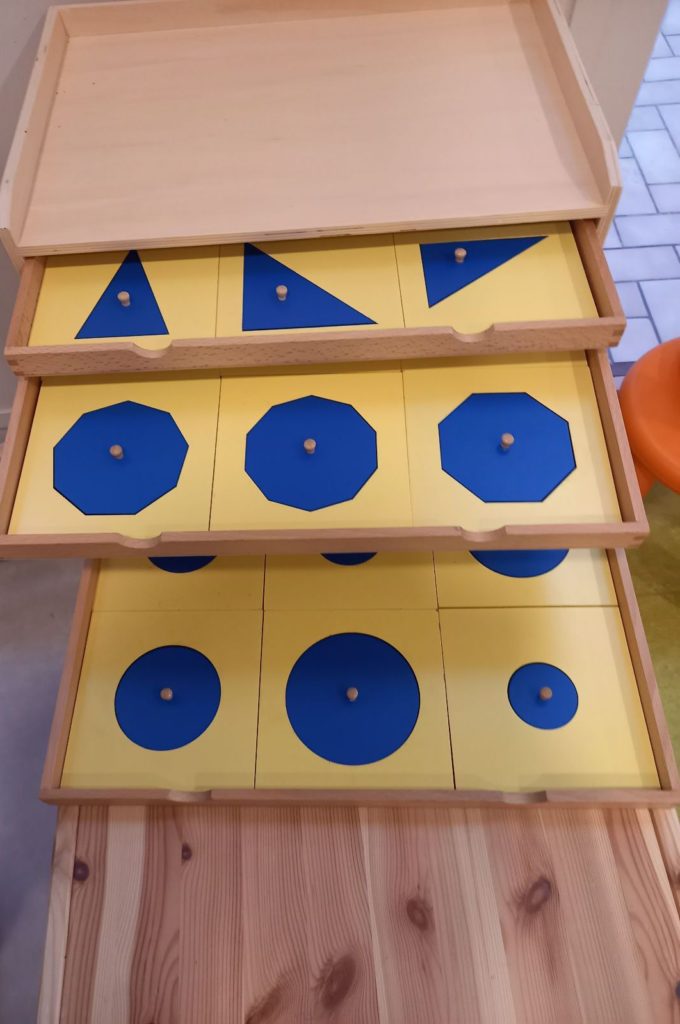
GEOMETRIC SHAPES
Children aged 2+ get their own individual mark making workbook.
They use the suggested shapes to try and colour in or draw its outline. This is the first stage of learning to write, working on coordination and fine motor skills in the fingers.
They use the suggested shapes to try and colour in or draw its outline. This is the first stage of learning to write, working on coordination and fine motor skills in the fingers.
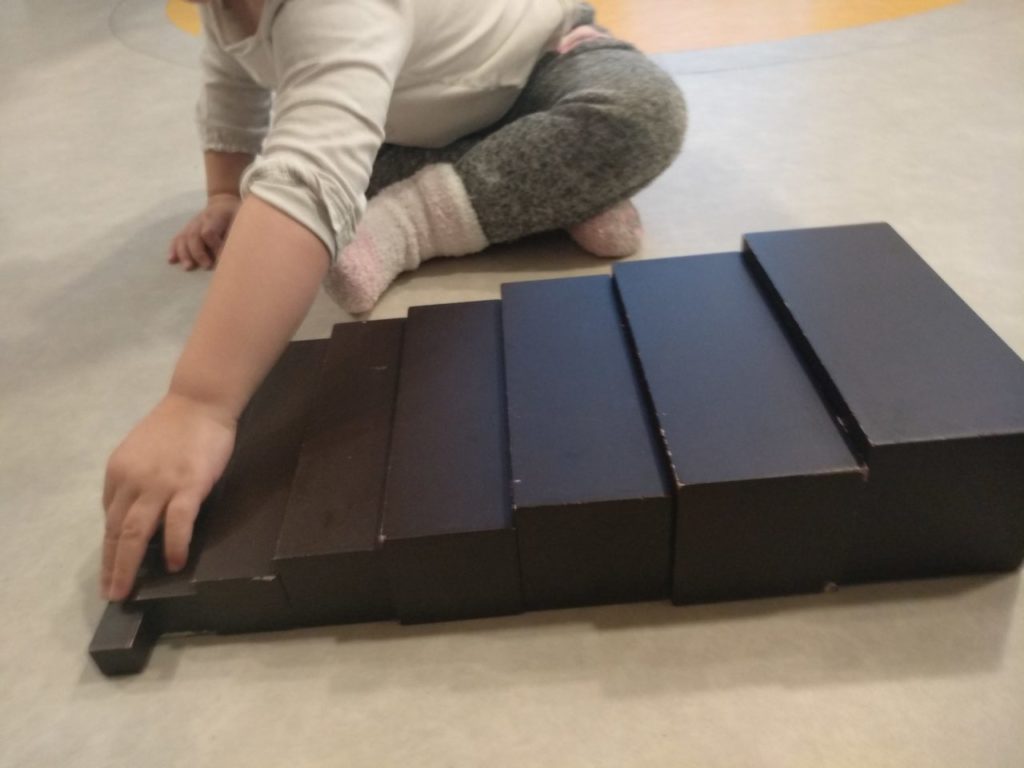
BROWN STAIRS
Used to develop the child’s understanding of size and difference. All ten blocks are the same size but vary in height and depth.
This material trains eye and hand co-ordination and teaches comparison and difference between wide and narrow sizes.
This material trains eye and hand co-ordination and teaches comparison and difference between wide and narrow sizes.
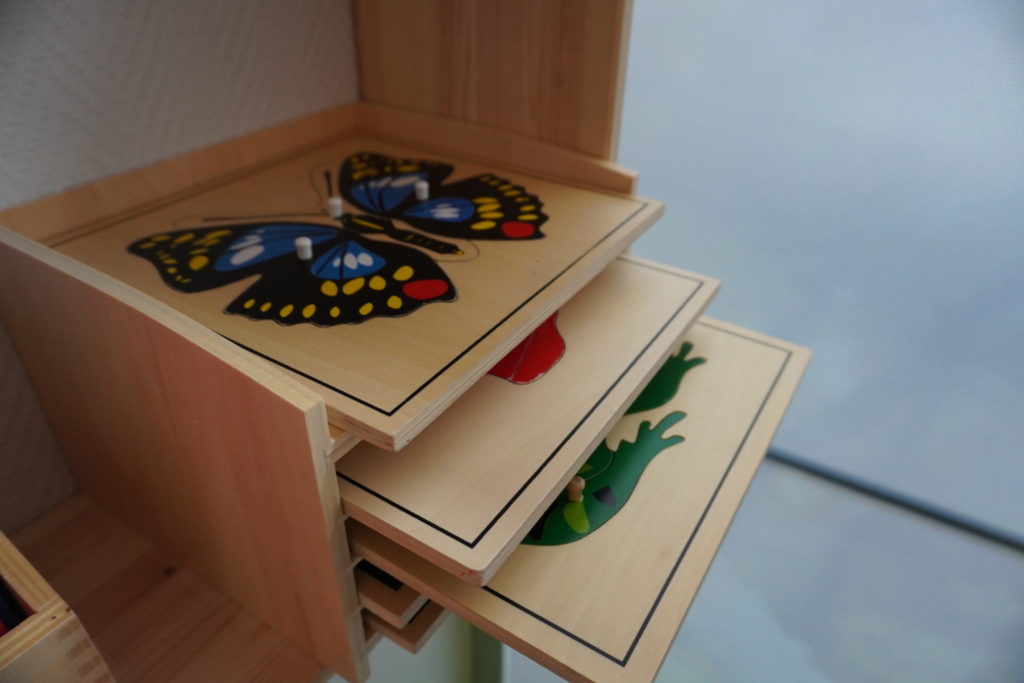
PUZZLES
Promote cognitive and fine motor development. It supports concentration, coordination and a sense of order and satisfaction at the end result.
The Montessori puzzles have real images of nature and animals and in more complex models add explanations and ‘underneath’ pictures of the object being explored.
The Montessori puzzles have real images of nature and animals and in more complex models add explanations and ‘underneath’ pictures of the object being explored.

CYLINDER BLOCKS
Allows the child to visually discriminate the cylinders straight away the diameter of the cylinders.
The size and height of each cylinder block remain the same while it is only the thickness that change.
The size and height of each cylinder block remain the same while it is only the thickness that change.

DRESSING FRAMES
Main purpose is to educate and teach the children how to dress themselves.
Frames are chosen and displayed depending on the developmental stage of the child. The older and developed the child the complexity of the dressing frame.
Frames are chosen and displayed depending on the developmental stage of the child. The older and developed the child the complexity of the dressing frame.
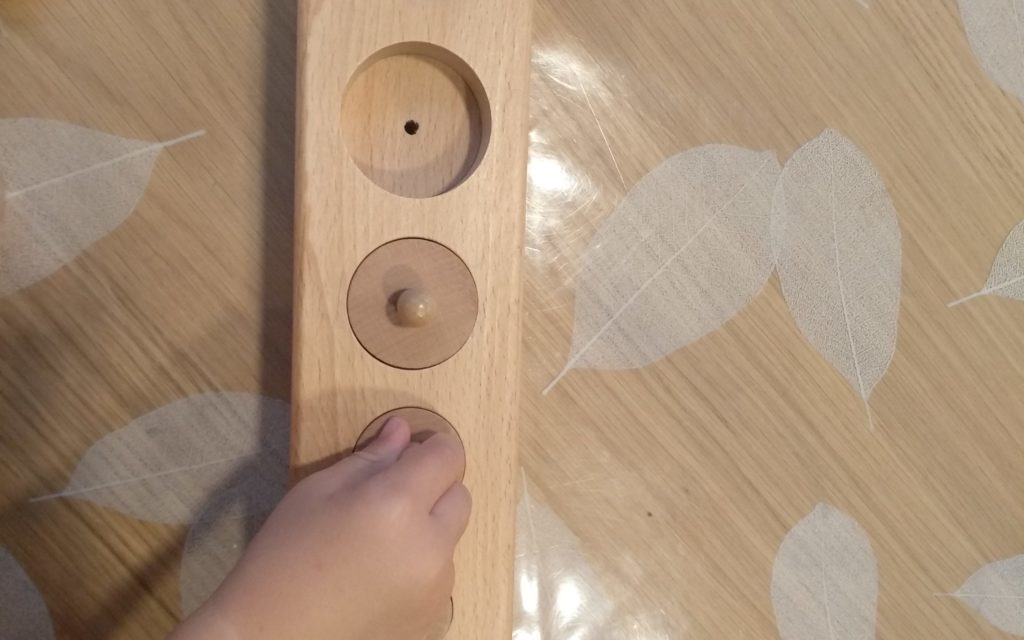
KNOBBED CYLINDERS
Promotes visual acuteness of size and dimension.
A useful material to use for manipulation and serve as an introduction into mathematic activities like comparison, grading, seriation. The cylinders provide a control of error and can be used and manoeuvred from a young age.
A useful material to use for manipulation and serve as an introduction into mathematic activities like comparison, grading, seriation. The cylinders provide a control of error and can be used and manoeuvred from a young age.
Terms and Conditions for enrolment at our Wasselonne daycare centre
Enrolment is open throughout the year: please complete the pre-enrolment form below.
Our Daycare centre in Wasselonne is eligible for childcare funding. This means that if you are eligible, you can receive funding for the child.
Nurturing, learning environment at the Wasselonne daycare centre
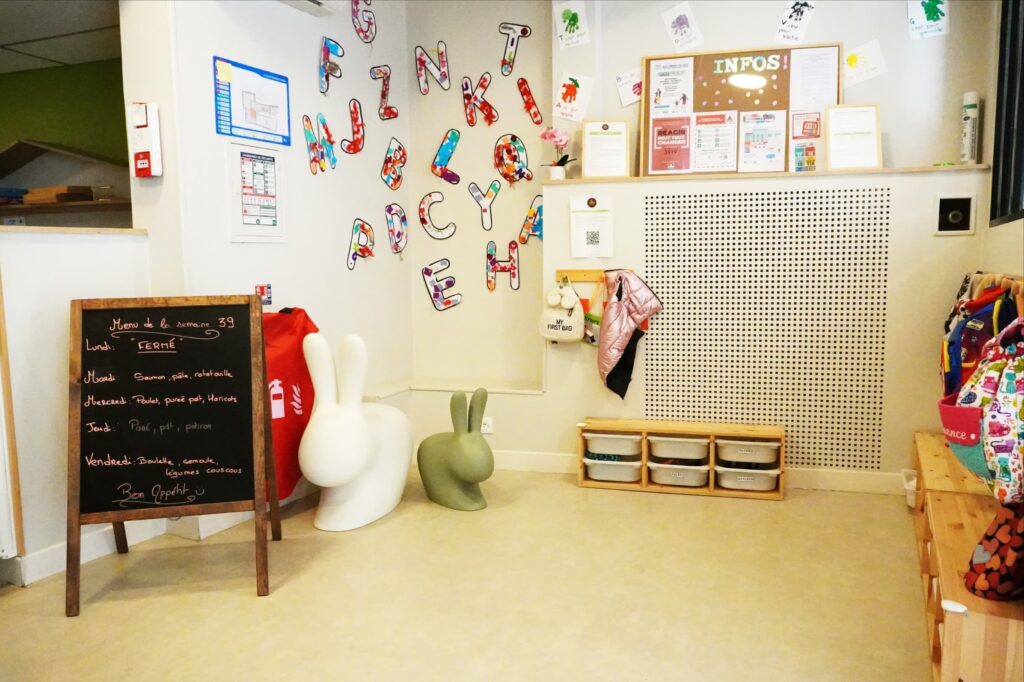
WELCOME AREA
This is an area to assist in a smooth transition between family and nursery. Children have their own individual storage for their belongings and shoes.
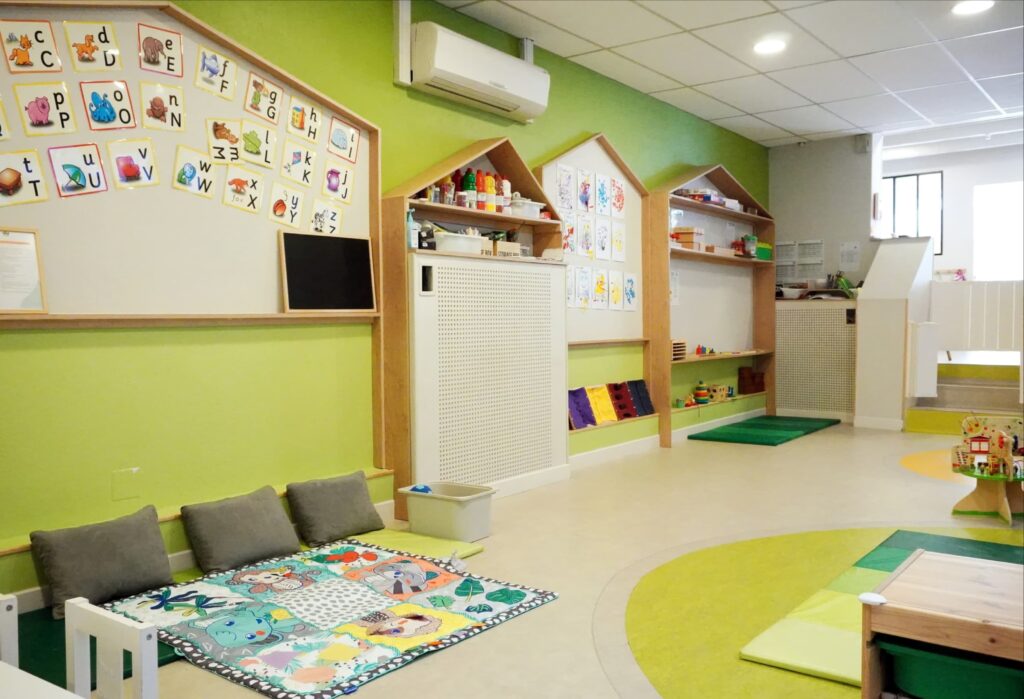
ACTIVITY AREA
The main area of the setting where the activities take place. Here is where children can access the Montessori materials.
Learn, discover and manipulate the self-service and early-learning games as well as book and reading corner.
Also on hand are the sensory material such as a ball pit, tunnels and foam climbing blocks help children develop their gross motor skills.
Learn, discover and manipulate the self-service and early-learning games as well as book and reading corner.
Also on hand are the sensory material such as a ball pit, tunnels and foam climbing blocks help children develop their gross motor skills.
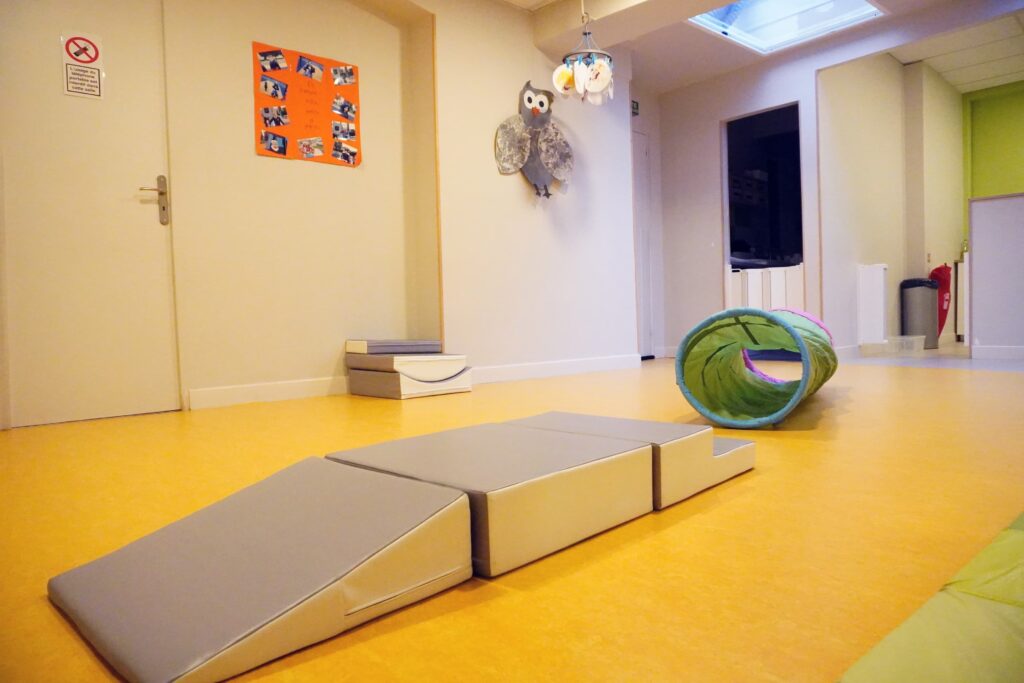
SENSORY ROOM
The sensory room includes large play blocks, a ball pond and tunnels. The children can express themselves and develop large motor skills.
Basic life skills and risk-taking such as walking, running, climbing, jumping and a sense of balance can be explored in a safe way. These types of activities help to boost a sense of belonging and well-being in the group.
Basic life skills and risk-taking such as walking, running, climbing, jumping and a sense of balance can be explored in a safe way. These types of activities help to boost a sense of belonging and well-being in the group.
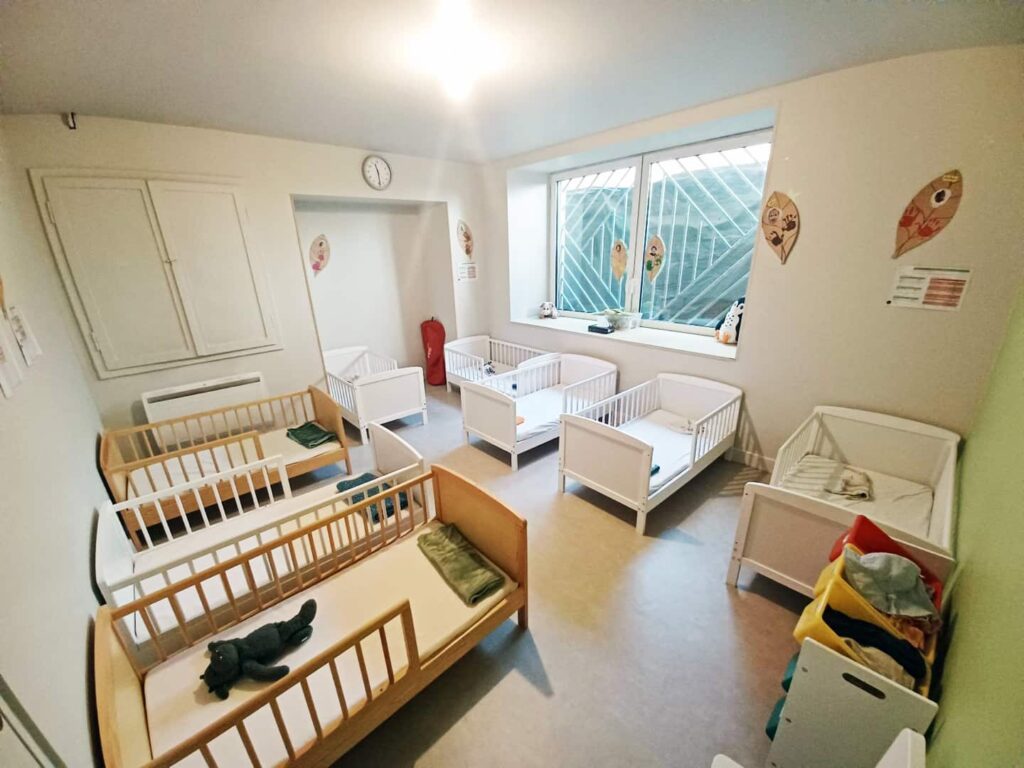
SLEEP AREAS
The bilingual daycare has two rooms dedicated to nap time.
One is specifically for our babies who are not walking and the other room is our toddler sleep space for those who are walking. Our professional and experience staff nurture and sometimes assist children to relax and unwind and rest during the day if they need it.
One is specifically for our babies who are not walking and the other room is our toddler sleep space for those who are walking. Our professional and experience staff nurture and sometimes assist children to relax and unwind and rest during the day if they need it.
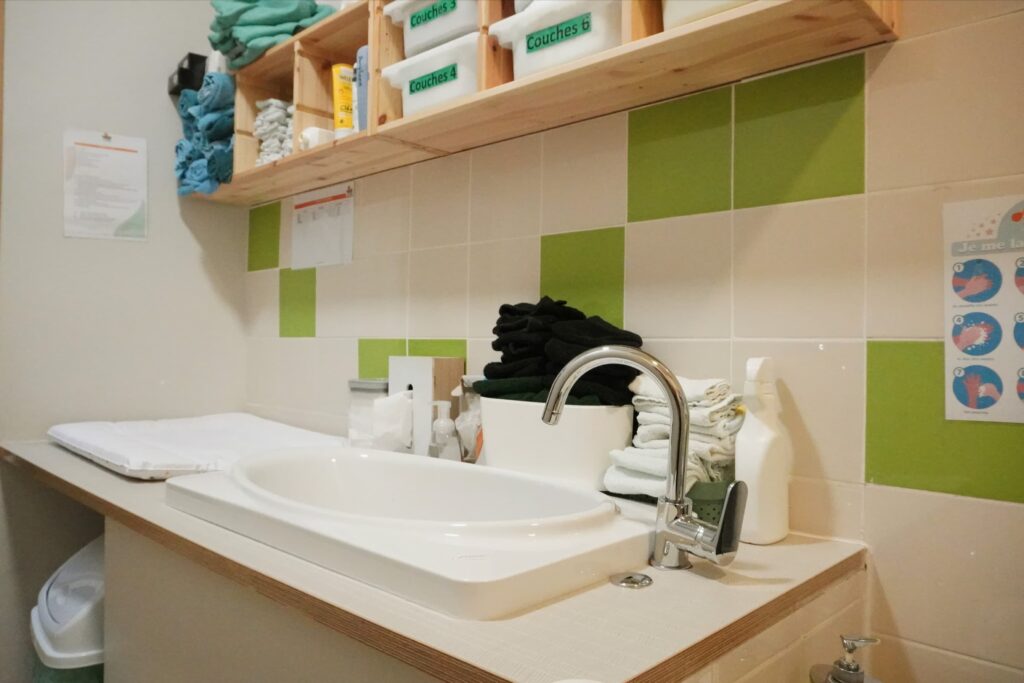
CHANGING AREA
A room for hygiene and learning, the changing room is also a privileged moment between the nursery nurse and the little ones.
It is a place where children feel reassured and confident. There is an individual storage space for each child, containing their own nappies and cleansing products.
It is a place where children feel reassured and confident. There is an individual storage space for each child, containing their own nappies and cleansing products.
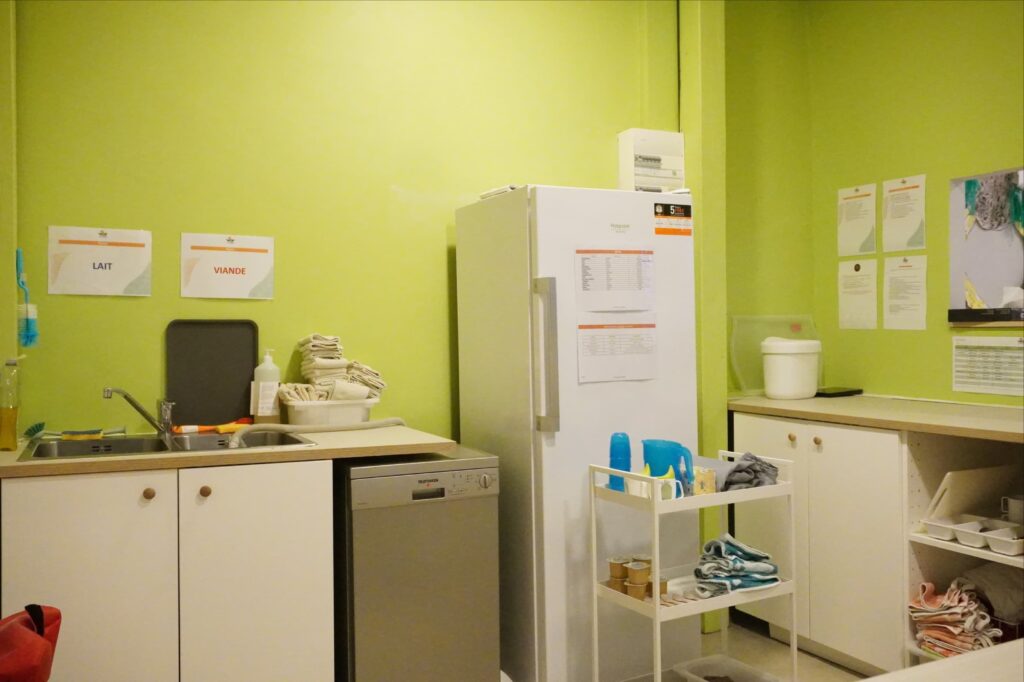
KITCHEN
The daycare’s kitchen is fully equipped for cooking.
The emphasis is on fresh fruits and vegetables, to provide a balance and proper eating approach for the children to enjoy healthy living habits from young.
The emphasis is on fresh fruits and vegetables, to provide a balance and proper eating approach for the children to enjoy healthy living habits from young.
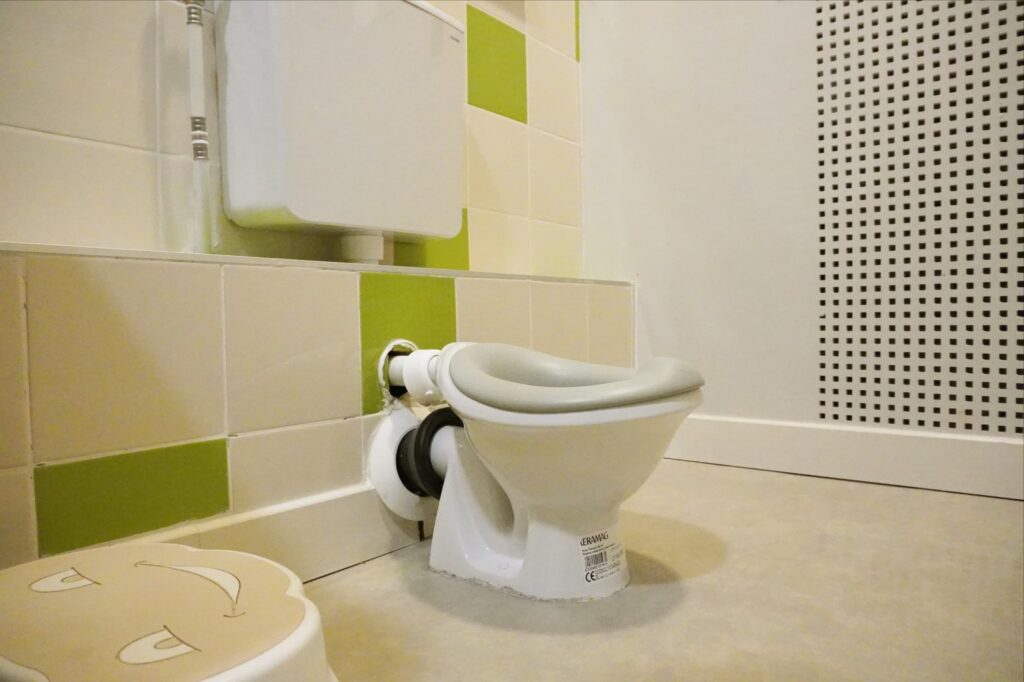
TOILETS
The daycare provides toilets, next to the changing room, are suitable for children to toilet train or already trained.
In this room, children get early hygiene and cleanliness habits. Visual handwashing instructions are displayed above the sink suited for the little ones and brushing teeth.
In this room, children get early hygiene and cleanliness habits. Visual handwashing instructions are displayed above the sink suited for the little ones and brushing teeth.
Live monitoring of your children's activity
